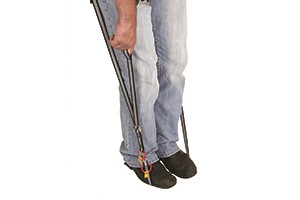What is Suspension Trauma?

A life is saved when someone’s personal fall arrest system stops a fall. But what about the worker’s condition after that? Waiting for rescue is uncomfortable, at best. The suspended worker is recovering from a traumatic experience and probably panicked, yet relieved to be alive. The time he or she is hanging mid-air may only be minutes, but likely feels much longer.
Orthostatic intolerance, due to constricted blood flow, may also occur. Unfortunately, this condition can make a rescue even more difficult. The symptoms to watch for are light-headedness, weakness, palpitations, headache, nausea, fainting, dizziness, and poor concentration. Prolonged immobility may lead to unconsciousness. Depending on the length of time that the worker is unconscious and immobile, he/she may die.
Why does this happen?
While in a sedentary position, blood can accumulate in the veins. This venous pooling is common after a fall arrest because of the force of gravity, restriction of the harness, and lack of movement. When the legs are immobile, the blood isn’t traveling normally to the heart. Since veins can expand, a large volume of blood may accumulate. Orthostatic intolerance can be stalled if a worker is able to move his/her legs, or is able to utilize suspension straps, available on some harnesses. It’s important to note that an injured or unconscious person won’t be able to do this.
To reduce the risk associated with prolonged suspension in fall arrest systems, OSHA recommends that employers follow these guidelines:
- Rescue suspended workers as quickly as possible
- Be aware that suspended workers are at risk of orthostatic intolerance and suspension trauma, and the symptoms to watch for
- Be aware that orthostatic intolerance is potentially life-threatening. Suspended workers with head injuries or who are unconscious are particularly at risk
- Be aware of the factors that increase the risk of orthostatic intolerance
OSHA also requires employers to train workers about rescue procedures, risk of orthostatic intolerance, and what actions they can take to diminish their risk.



